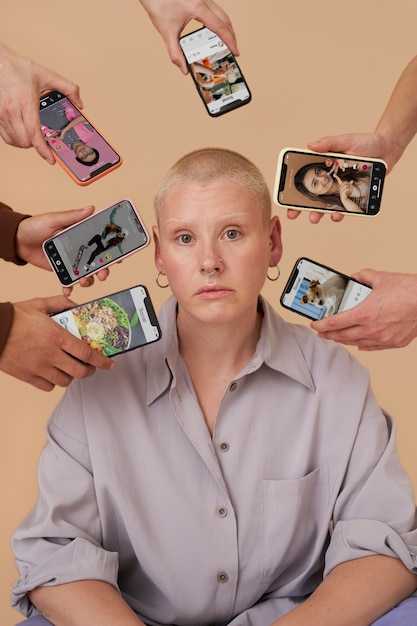Hey babe — how do you feel about slipping into the bedroom for a bit of fun? Wow, someone’s clearly in the mood; give me just a second. Okay, so what Jimmy’s showing here is called spontaneous desire. He probably saw me walk in and thought, “She’s gorgeous” — well, I could use a shave, but that’s beside the point — and for him it’s easy to get turned on and suddenly want that kind of intimacy. How are you feeling now? Here’s where it gets interesting: I experience something different known as responsive desire. That means my arousal and sexual wanting tend to come as a reaction to closeness and affectionate touch, not beforehand the way his does. In practice, I need some kissing, cuddling, and gentle contact first before I start to feel desire. It’s important to say that neither way is superior — it’s fine that he’s more spontaneous and it’s fine that I’m more responsive. Oh, he’s doing a playful crab-walk — but the single most important thing he does is make me feel safe. Responsive desire needs trust and security; you’re not going to feel turned on if you’re pressured or made to feel ashamed for being different. That safety lets me open up and be physically vulnerable even before any arousal appears, because I know that if it’s just not happening for me today I can stop whenever I need to and he’ll respect that. If I want, I can also just focus on him in the moment. For us, learning about the different ways people experience desire has been really valuable — some people heat up like microwaves, others like ovens — there’s no wrong approach. When you love someone, you pay attention to how they experience desire and arousal, help them feel prioritized and safe, and that’s what leads to the most pleasure.
Here are some practical, evidence-based ideas to help partners support each other and bridge differences in desire style:
– Communicate early and kindly. Say what you need without blame: “I really like it when we slow down and hug first” or “I sometimes get in the mood quickly—how can I make that feel good for you?”
– Build safety and predictability. Responsive desire often responds to feelings of trust, so small rituals (a goodnight kiss, a massage, a tech-free hour together) can create the emotional context that makes desire more likely to emerge.
– Use low-pressure invitations. Instead of asking “Do you want sex?” try “Do you want to cuddle?” or “Can I kiss you?” This gives space for arousal to develop without pressure or shame.
– Focus on non-goal-oriented touch. Responsive desire can be activated by affectionate, exploratory, or sensual contact that isn’t aimed immediately at sex: hand-holding, long hugs, slow dancing, scalp or neck rubs, or a shared bath.
– Notice timing and energy. Stress, fatigue, hormones, alcohol, medications, and life transitions change desire. If someone’s low, be compassionate and avoid taking it personally. Plan intimacy for times when both partners are rested and less distracted when possible.
– Check in with boundaries and consent. Make it easy to say “not today” without guilt. Responsive partners need the knowledge that they can stop or slow things at any point and still be loved and respected.
– Try structured exercises if you want to experiment. Sensate-focus exercises (gentle touch for pleasure without performance pressure), mutual massages, or guided communication prompts can help partners learn what kinds of contact spark arousal for each other.
– Don’t forget the practical supports. If low desire is persistent and distressing for one or both partners, consider medical or mental-health factors (depression, anxiety, hormonal changes, medications) and consult a doctor or a sex-positive therapist. Couples therapy or sex therapy can be especially helpful when mismatched desire causes conflict.
Finally, normalize variability. Desire isn’t a fixed trait — it changes across days, seasons, and life stages. The healthiest relationships combine curiosity, empathy, and creative problem-solving: learning one another’s rhythms, making small adjustments, and celebrating intimacy in many forms, not just sex. That’s how both spontaneous and responsive partners can feel seen, cherished, and satisfied.
Practical Strategies for Partners: Communication, Timing, and Nonsexual Intimacy
Set a weekly 10-minute “desire check” where each partner names one thing that increased pleasure and one boundary; use that time to schedule one shared intimacy activity for the week. Keep the check concrete: who, when, what, and any limits. End with a single actionable agreement.
Use short, specific “I” statements that describe sensations and requests: for example, “I notice my desire rises after 15–20 minutes of cuddling; can we try 20 minutes of nonsexual touch before sex tonight?” Offer one clear alternative if the other partner can’t join: “If you’re tired, would you prefer a 10-minute hand massage or a postponement to tomorrow at 8pm?”
Create two recurring time blocks: one micro‑routine and one longer session. Micro‑routine: daily 5–15 minutes (morning kiss, evening 10-minute touch). Longer session: weekly 60–90 minutes for a date or extended intimacy. Track these for four weeks and adjust based on how often responsive desire appears following the micro-routine.
Build a nonsexual intimacy menu with durations and purposes, and rotate items twice weekly. Examples: 5–10 minute face-to-face check-in (emotional alignment), 10–15 minute partner massage (physical arousal without pressure), 20–30 minute walk holding hands (oxytocin-boosting contact). Measure effect by noting whether desire increases within 10–30 minutes after each activity.
Agree on low-pressure rituals that trigger responsive desire. Choose a single, neutral cue–such as a particular song, a gentle neck rub, or a code word–that both partners associate with optional sensual contact. Limit the cue’s use to moments when at least one partner is open; allow an immediate, no-questions opt-out to protect consent.
When desire mismatches occur, use a three-step response: acknowledge, offer a short sensual option, and schedule a later time if needed. Script: “I understand you’re not feeling it. Would you try a 10-minute cuddle now, or shall we set aside 30 minutes tomorrow evening?” This reduces pressure while preserving connection.
Track patterns for six weeks: note timing of desire, mood, sleep, alcohol, and relationship stressors. If responsive desire reliably follows specific activities (for example, after a 15-minute massage 70% of the time), prioritize those activities twice weekly. Use simple marks on a calendar rather than long notes.
Seek specialist help when mismatches cause repeated withdrawal, recurring resentment, or sexual avoidance that lasts three months or more. Ask for a clinician with training in desire discrepancy and responsive desire; request home practice assignments and measurable goals (e.g., two intimacy activities per week for eight weeks) before continuing therapy sessions.


 The Truth about Spontaneous Vs Responsive Desire⧸Arousal">
The Truth about Spontaneous Vs Responsive Desire⧸Arousal">


 This Mindset Strengthens You to Overcome Childhood Trauma">
This Mindset Strengthens You to Overcome Childhood Trauma">
 The Avoidant’s Final Dirty Trick (When They Know You’ve Stopped Caring)">
The Avoidant’s Final Dirty Trick (When They Know You’ve Stopped Caring)">
 The Avoidant Love Cycle Too Many Women Miss — Don’t Let It Pull You Back | Best Motivational Speech">
The Avoidant Love Cycle Too Many Women Miss — Don’t Let It Pull You Back | Best Motivational Speech">
 Don’t Let Manipulative “Poly” Friends Push You to Self-Abandon">
Don’t Let Manipulative “Poly” Friends Push You to Self-Abandon">
 20 Signs That Signal YOU Are Partner Material">
20 Signs That Signal YOU Are Partner Material">
 I didn’t understand my Wife until I did THIS.">
I didn’t understand my Wife until I did THIS.">
 How to be a GREAT Husband">
How to be a GREAT Husband">


